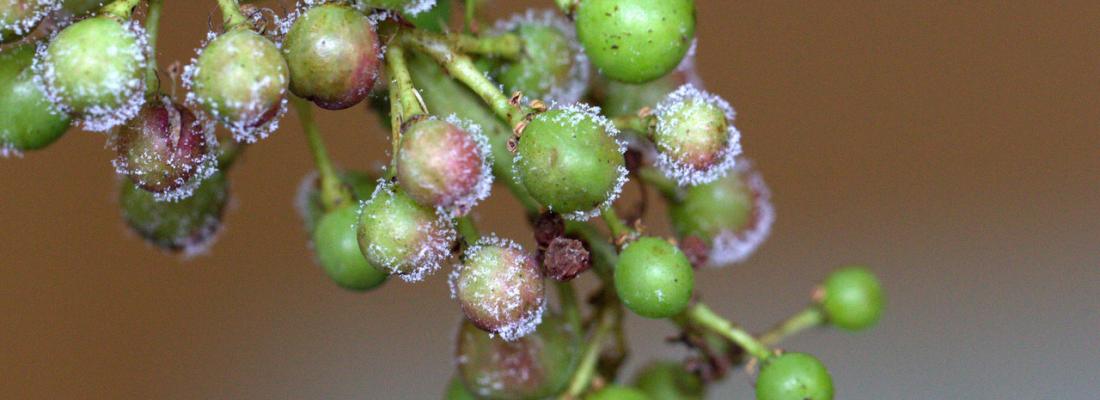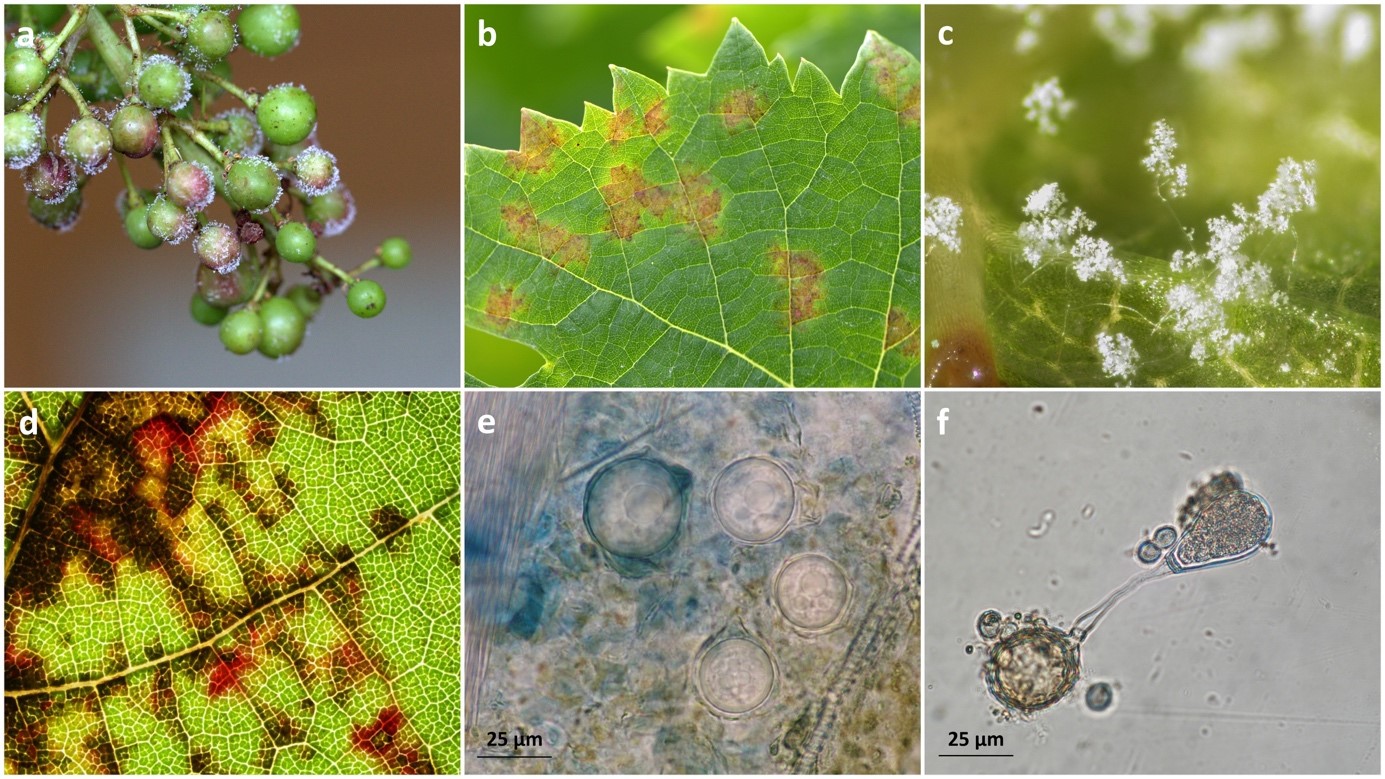Agroecology Reading time 4 min
Grapevine downy mildew: researchers identify a group of genes involved in its sexual reproduction
Published on 17 August 2020

What are “mating types”?
“Mating types” are self-incompatibility systems that promote outcrossing in plants, fungi and oomycetes. The gametes from two individuals-carrying a copy of each chromosome-only fuse into an egg or zygote if they are of opposite sexual types. How does this recognition take place in mating types? In potato blight, for example, phytol, a terpene common in plants, is modified and transformed into a hormone, which is then emitted into the environment. The opposite mating type individual perceives the signal, modifies the hormone and releases it to signal its presence to the other. Unlike plants and fungi, the genes involved in this process had not yet been identified in oomycetes.

a- Mildew on bunch of grapes, b- mildew on leaf, c- sporanges on leaf, d- "mosaic" mildew on leaf (autumn), e- oospores (sexual spore), f- germination of an oospore containing motile zoospores
The discovery: determinism of mating type locus identified in grapevine downy mildew
In their study, researchers from INRAE, the CNRS, and Paris Saclay University identified the locus[2] determining mating type in grapevine downy mildew. This is the first description ever of this locus in an oomycete. By associating genomic variations to mating types, identified by crossing a large number of individuals, researchers showed that one mating type (P1) was homozygous (Mat-a/Mat-a), whereas the other (P2) was heterozygous[3] (Mat-a/Mat-b). The mating type locus encompasses 40 genes, one of which could encode a hormone receptor.

A fundamental discovery, and prospects in the fight against downy mildew
These findings have crucial implications in understanding mating type evolution, since they reveal a unique determinism involving an asymmetry of heterozygosity similar to that of sex chromosomes (like the XY system in mammals). This system differs greatly from other mating type systems known in plants, algae, and fungi.
Downy mildew is one of the main diseases affecting grapevine, causing significant losses and requiring over ten fungicide treatments when conditions are favourable. As a result of this discovery, a new method to fight grapevine downy mildew can be envisaged, one that would focus on the sexual phase of the pathogen. Limiting the success of sexual reproduction could help reduce the intensity of epidemics the following year. The goal of the researchers responsible for this study is to develop a process to disrupt the sexual phase, for example, by saturating the environment with hormones specific to the recognition of mating types.
[1] Unlike bacteria (prokaryotes), eukaryotes have a nucleus, which contains the DNA.
[2] Locus: precise location of a gene on a chromosome.
[3] Homozygosity is a condition in which two alleles are identical for a particular gene. The heterozygous state is one in which two alleles are different for a particular gene.
|
Reference Identification of the first oomycete mating-type locus sequence in the grapevine downy mildew pathogen, Plasmopara viticola
|
View the video: Germination of an oospore (“egg” originating from sexual reproduction) with its macrosporocyte containing mobile zoospores (asexual). The zoospores move using two flagella and their release will be the cause of the epidemic in spring.
